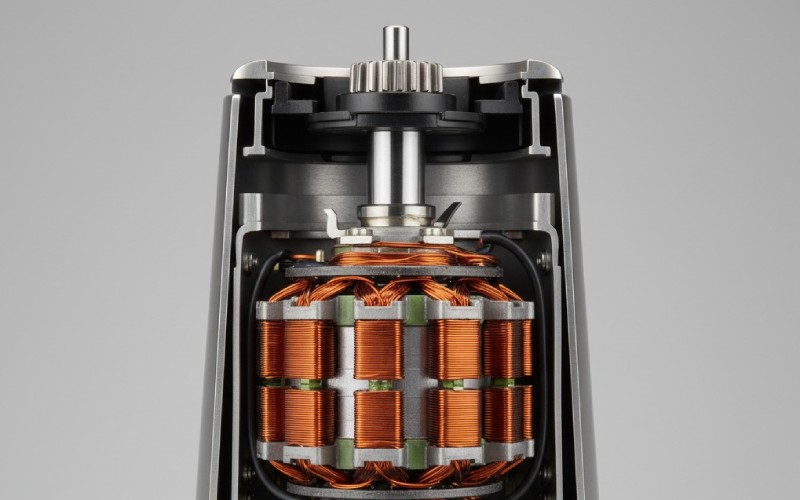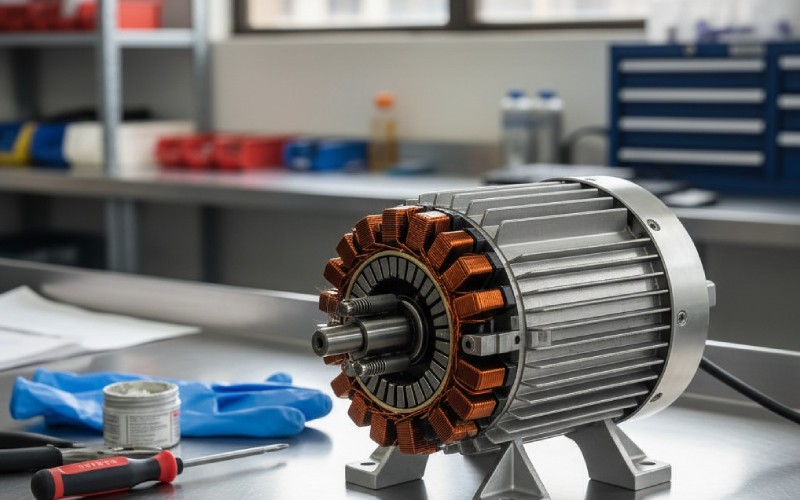Let Sino's Lamination Stacks Empower Your Project!
To speed up your project, you can label Lamination Stacks with details such as tolerance, material, surface finish, whether or not oxidized insulation is required, quantity, and more.

The motor is like the engine of your kitchen equipment. Knowing about the blender motor and its application is the most important part of picking the right machine. This article will tell you all the things you should know. You will find out how a blender motor works. You will also learn why some machines have different motors. And you will see how to choose the best product for what you need.
You can think of it like a car engine. A car can’t go far if its engine isn’t good. A blender is the same way. A weak blender motor will give you smoothies with chunks in them. The machine also won’t be able to do hard jobs. So what is it? A blender motor is a certain kind of electric motor. Most blenders have what is called a universal motor. This kind of motor is very good because it can make a lot of power but is still small. Its main job is to change electrical power from the wall into movement. This movement turns a small metal stick, which is called a shaft. The turning shaft is what makes the blade in the blender’s container spin. The power of that blender motor decides if you can mix a simple sauce or break up hard ice for a cold drink.

It might look hard to understand, but the system is really pretty easy. I think of it as a set of steps that happen one after another. It all begins when you plug in your equipment. Then you press a button. This sends an electrical signal to the blender motor. The motor is placed safely inside the machine’s base. The base is usually heavy. This helps keep the machine from moving around when the motor is running fast.
As soon as the blender motor gets the signal, it starts to turn very fast. The motor’s shaft sticks up from the top of the base. The bottom of the blender container has a part that links up with this shaft. When you put the container on the base, these two parts connect. The turning shaft makes the blade part inside the container turn. This easy system lets us chop, blend, and mix many kinds of food. The manufacturer needs to ensure that all the parts work together in the right way.
A powerful blender motor is the number one feature you should think about. You can tell how much power it has by looking at its watts. For using a blender at home, looking at the watts is usually all you need to do. A blender with 300 to 500 watts is okay for easy jobs like making milkshakes with soft food. But if you want to do bigger jobs, you will need more power.
A more powerful blender motor, like one with 1,000 watts or more, can work with much harder foods. It can turn nuts into a smooth butter. It can grind coffee beans. It can also crush ice until it looks like snow. The design of the blender motor is important, too. A motor that is made well will have features to prevent it from getting too hot. Some motors have fans inside them. Others have a safety switch that turns it off to prevent any harm. When you get a blender, you want a motor that is strong and made to last a long time.
I get this question a lot. The short answer is no. A single type of blender motor is not good for every application. That is the reason there is a large variety of kitchen appliances you can buy. A small blender motor that is made for a personal blender is perfect for making one smoothie for yourself. It is built to run with power for a short time. But if you try to use that same motor to mix thick bread dough, it will probably break.
Different jobs need different speeds and turning power. Turning power is also called torque. Blending at a high speed to make a smooth puree does not need as much torque as a slow mixer that turns heavy cookie dough. A manufacturer will select a specific type of motor for each product they create. They choose it based on the planned use of the equipment. They must ensure the motor can do its work without problems.
They both mix things. But the application for their motors is very different. A blender motor is made to be very fast. Its job is to turn a sharp blade many thousands of times in a minute. This super high speed is what turns fruits and vegetables into a liquid and makes smooth things to eat. The blade design is for chopping up food very, very fast.
A mixer, however, is made for turning power. Imagine mixing up heavy dough. A mixer does not have to be fast, but it does need to be very strong. The blender motor in a mixer (or just mixer motor) turns much more slowly. But it has the power to push through thick foods and not get stuck. The tools, like dough hooks, also have a different design. So, you use a blender motor for high-speed cutting. You use a mixer motor for slow, strong pushing. It is not a good idea to use one for the other’s job.
This is another good question about different equipment. The answer is no. Immersion blenders and juicers usually use very different motors. First, let’s talk about immersion blenders. Some people call them a hand blender. I really like my hand blender because I can make soup smooth right in the cooking pot. The blender motor in immersion blenders is very small. It has to be small enough to fit inside the handle that you hold. This small blender motor is made to be easy to use for fast jobs. It can mix liquids and soft food just fine, but it is not made for hard work like breaking up ice.
A juicer is a totally different kind of machine. Its purpose is to get the juice out of food and leave the pulpy parts behind. The blender motor in a juicer must have steady power. It needs this power to grind and squeeze hard foods like carrots and apples. Some juicers have a very fast motor to spin a blade, while others use a slower motor with more turning power to “chew” the food and get the juice out. The design and use of the motor in a juicer is made just for that one specific job.
Here is a table to make it more clear:
| Equipment Type | Common Motor Design | Best For |
|---|---|---|
| Countertop Blender | High-speed, medium turning power | Smoothies, sauces, crushing ice |
| Mixer | Low-speed, high turning power | Dough, batters, thick things |
| Immersion Blenders | Small, high-speed, low turning power | Soups, small blending jobs |
| Juicer | Special speed and turning power | Getting juice from food |
The development of a new kitchen product is a very interesting way of doing things. I have talked with a few people who design them. It all begins with a thought about a specific use. A manufacturer might think, “Let’s make a new blender that is only for making green smoothies.” This one idea helps them decide everything, particularly the design of the blender motor.
The people working on product development will figure out what the blender motor has to do. For green smoothies, it needs to be able to tear up tough, leafy vegetables like kale. This means it needs a powerful motor and a special blade design. The team will try out different motors to find the best one. They also design the plastic body, the container, and the buttons. They have to ensure the motor they pick is not too loud or does not get too hot. The final product is a mix of power, design, and how much it costs.
A manufacturer has many things to think about when picking a blender motor. Their biggest goal is to make a product that works well for its job and will last for a long time. First, they decide what the product is for. Is it a low-cost blender for easy jobs? Or is it a top-quality, commercial-style machine that can do anything? This helps them choose a motor with the right amount of power.
Then, they think about the design of the whole machine. The blender motor has to fit inside the base. They also think about how long it will last. A commercial blender motor has better quality parts because it needs to run for many hours each day. A motor for home use does not need to be so tough. The manufacturer also must ensure the motor is safe. They do a lot of tests to be sure the motor and its electrical parts are safe to use. They work hard to make a good product that gives you the assistance you need in your kitchen.

Yes, it can! But, and this is very important, you need the right kind of blender motor and equipment. The application of crushing ice is one of the hardest tests for any blender. To do it well, you need a powerful motor, a strong blade, and a good container design, all working together.
A blender motor with 1,000 watts or more is a good place to start. This power gives the blade enough force to break the ice into tiny pieces instead of just moving it around. The blade is also very important. Look for a blade made from strong, thick steel. A cheap, thin blade might bend or even break. Last, the shape of the container helps. Some containers are shaped to pull the ice and other food down toward the turning blade. Without this kind of system, the ice can get stuck, and the blender motor just turns and turns without doing any work. A powerful blender motor is very important, but it needs assistance from the other parts of the machine’s design.
Picking the right equipment can feel like too much information because there are so many choices. From all my experience, I tell people to think about how they will use the product. You don’t need to pay for features if you will not use them. Here are a few things I always look for, especially when I make a suggestion:
I hope this helped you get a better look at the engine of your blender. It is more than just a machine. It is a tool that needs the right motor for the job. To ensure you get the best equipment for your money, just remember these important points: